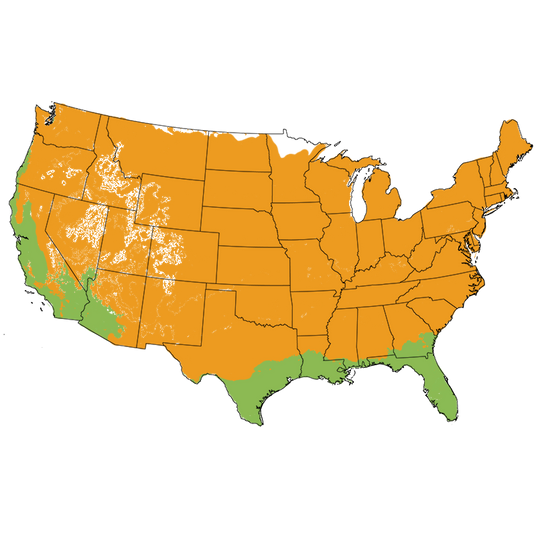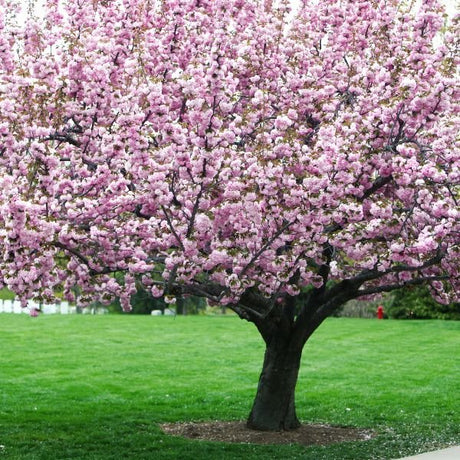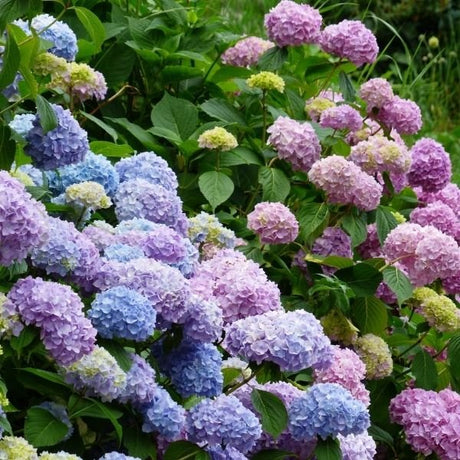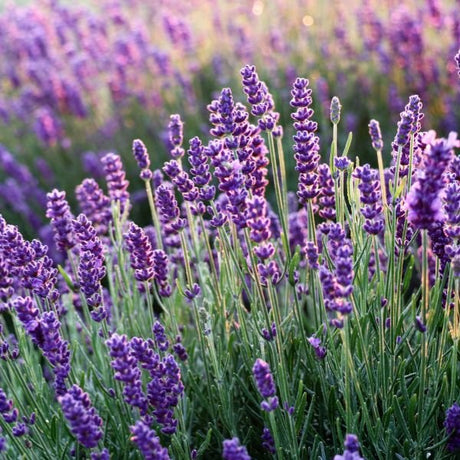Mexican Key Lime Tree
- Stay Protected with Plant Sentry ™
Mexican Key Lime Tree - 4x4x11 Inch Container is backordered and will ship as soon as it is back in stock.
Plant Sentry™
Plant Sentry™
Plant Sentry is designed to protect both consumers and the nursery trade from invasive plant pests and diseases. Sites that display the Plant Sentry protection badge are protected from consumers buying and nurseries shipping material carrying invasive pests and diseases.
This proprietary eCommerce software prevents the shipment of a restricted plant to each state. The Plant Sentry system includes a shipment certification program. The Plant Sentry Compliance Officer works closely with NatureHills.com and each nursery or fulfillment center to ensure only compliant plants are sold to customers.
Click Here to learn more

Delivery and Shipping
Delivery and Shipping
Shipping
To obtain a more accurate shipment time-frame, simply enter your zip code in the “Find Your Growing Zone” box to the right. Our plants are grown all over the country and lead time on items may be different because of this. Once your order is placed, you will also receive the specific shipment time-frame information as part of your order confirmation. Once an item ships, you will receive shipment notification and tracking numbers, so you can follow along while your plant travels to your doorstep. We use FedEx, UPS, or USPS at our discretion.
Due to winter weather we have put a hold on shipping to the areas shown below in grey. You can still order now and we will ship the plant to you during an appropriate time for your zone.
Standard Shipping Rates
At Nature Hills we handle, package and ship the products you order with the utmost care to ensure healthy delivery. Shipping and handling charges are calculated based on the tables below. Please note that some items include an additional handling surcharge, these will be noted on the item's product page.
| From | To | S&H |
|---|---|---|
| $0 | $19.99 | $24.99 |
| $20 | $49.99 | $29.99 |
| $50 | $69.99 | $34.99 |
| $70 | $99.99 | $39.99 |
| $100 | $129.99 | $44.99 |
| $130 | $149.99 | $48.99 |
| $150 | $150+ | Approx 28% |
Click here to see our full rates
Buying Options for Plants
Nature Hills sells a large variety of plants with several options available. Plants are offered in both potted containers and as dormant bare root without soil. Here is a helpful resource to understand your options as you create a beautiful landscape with help from Nature Hills.
Ever wonder what a larger plant will mean for your landscape? Container Sizes are really all about the age of the plant!
Seasonally, Nature Hills offers hand selected, high quality bare root trees, shrubs and perennials. Bare root plants are sold by height from the top of the root system to the top of the plant. Plants may be taller than the height minimums.
- Popular sizes of select trees are 1 foot, 2 feet, 3 feet, etc.
- Popular sizes of select bare root plants is 1 foot, 18 inches, etc.
Nature Hills Container Size by Volume
Keep in mind, specific varieties and different growing conditions can affect the rate at which plants grow. Variations in size may occur.
| Young Plants to 18 Months | ||
|---|---|---|
| Size | Volume | |
| 2"x2"x3" | Ranges from | .18 to .21 dry quarts / .198 to .23 dry liters in volume |
| 4.5" Container | Equal to | .65 dry quart / .72 dry liter in volume |
| Sprinter Pot | Equal to | .63 dry quart / .69 dry liter in volume |
| 4" Container | Ranges from | .31 to .87 / .35 to .96 dry liter in volume |
| 6" Container | Equal to | 1.4 dry quarts / 1.59 dry liters in volume |
| 1 Quart | Equal to | 1 dry quart / 1.1 dry liter in volume |
| 5.5" Container | Equal to | 1.89 of a dry quart / 2.08 dry liters in volume |
| 4"x4"x5" | Ranges from | .8 to 1.1 dry quarts / .88 to 1.2 dry liters in volume |
| 4"x4"x6" | Ranges from | 1.0 to 1.3 dry quarts / 1.1 to 1.41 dry liters in volume |
| 4"x4"x9" | Ranges from | 1.1 to 2.1 dry quarts / 1.2 to 2.3 dry liters in volume |
| 4"x4"x10" | Ranges from | 1.7 to 2.3 dry quart / 1.87 to 2.53 dry liters in volume |
| Plants 18 Months - 2.5 Years Old | ||
|---|---|---|
| Size | Volume | |
| 2 Quart | Equal to | 2 dry quarts / 2.2 dry liters in volume |
| #1 Container | Ranges from | 2.26 to 3.73 dry quarts / 2.49 to 4.11 dry liters in volume |
| 5"x5"x12" | Equal to | 3.5 to 4.3 dry quarts / 3.85 to 4.74 dry liters in volume |
| Plants 2 - 4 Years Old | ||
|---|---|---|
| Size | Volume | |
| #2 Container | Ranges from | 1.19 to 1.76 dry gallons / 5.24 to 7.75 dry liters in volume |
| #3 Container | Ranges from | 2.32 to 2.76 dry gallons / 10.22 to 12.16 dry liters in volume |
| Plants 3 - 5 Years Old | ||
|---|---|---|
| Size | Volume | |
| #5 Container | Ranges from | 2.92 to 4.62 dry gallons / 12.86 to 20.35 dry liters in volume |
| #6 Container | Ranges from | 5.25 to 6.01 dry gallons / 23.12 to 26.42 dry liters in volume |
| #7 Container | Ranges from | 5.98 to 6.08 dry gallons / 26.34 to 26.78 dry liters in volume |
Plant Highlights
Mexican Key Lime Tree highlights at a glance!
Plant Highlights
Plant Highlights
-
Brand
-
Botanical Name
-
Growing Zones
-
Mature Height
-
Mature Spread
-
Sun ExposureFull Sun
-
Moisture
-
Soil
-
Growth RateSlow
-
Flower Color
-
Fall Color
-
Pollinator Friendly
-
Pollinator Required
-
Fragrant
-
Pruning Time
-
Bloom PeriodLate Spring, Summer
-
Harvest Time

Growing Zones 9-11 (patio 4-11)
Look in any bartender's tray across the country and you'll probably find neat triangles of squeezable cut limes. These are Mexican Key Limes (Citrus x aurantifolia) and they add a wonderful boost of flavor when spritzing a cocktail, a glass of sparkling water, or a taco. And don't get us started on the sweet-tart taste of Key Lime pie.
The fragrant flower buds are purple-tinged and open to pure, waxy white. They'll perfume the air with a wonderfully fresh citrus scent. Even the leaves release a marvelous lime scent when crushed. Try them in potpourri or homemade soaps and shampoo bars.
Mexican Key Lime is also known as Bartenders Lime due to its great flavor and high juice content. It's also called the West Indian Lime, to recognize where this lime was first propagated in the West Indies. Smaller, sweeter and thinner-skinned than Persian lime varieties, Mexican Key Limes are true limes. Even though their thin skin can be green or yellow-green, they are packed with juice. The small, tart fruit has a wonderful flavor with outstanding floral hints.
Planting and Application:
Mexican Key Lime makes an ideal container plant and a wonderful patio shrubby tree. Imagine having the fruit for your drinks or cooking just an arm's length away! Grow them in the ground in Zones 9 - 11. Or, use as a patio tree in a large container in colder climates, then bring them indoors as houseplants for the winter.
This is both an ornamental and edible tree with fragrant white flowers, shaggy, deep green leaves and yellow-green fruit. Try it as you would other trees. Make a bold statement by placing a single Mexican Key Lime tree as an anchor in your foundation planting.
- Fragrant, Delicious Mexican Key Limes
- Versatile, Aromatic Small Tree
- Culinary Favorite
- Fragrant White Blossoms
- High Yield
#ProPlantTips for Care:
Citrus trees need full sun and good air circulation and drainage. Plant in very well-drained slightly acidic soil with adequate fertility. Citrus trees like to dry out between waterings and enjoy moderate moisture, in pots or in the ground.
Protecting Container Citrus From Cold
If you're growing these tropical trees in the ground in the lowest of their favored growing zones, they need to be planted in a sheltered spot to avoid the worst of the chill. If a spot like that is unavailable then you are better off planting in a large, deep container.
This Citrus variety naturally grows successfully in marginal Citrus areas (USDA zones 8 to 4). But Citrus trees grown in these zones should be grown in containers and brought indoors before the wintertime.
In cooler growing zones, begin slowly acclimating your tree indoors in the early fall or moving them into a protected location, eventually moving your tree inside in bright indirect sun for the winter if the temperatures in your area ever dip below that 40°F range.
In spring, reverse this process and begin acclimating your tree to again be back out in the full sun all summer. This reduces stress and leaf drop.
- Full Sun
- Moderate Fertility & Moisture
- Prune After Fruiting
- Slightly Acidic Well-Drained Soil
- Citrus Make Great Indoor Houseplant
The fruit fetches a good market price, and these pricey limes can really add up at the supermarket. Why not grow your own supply of these extremely popular limes? Order your own Mexican Key Lime Tree today at NatureHills.com!
Lime Variety Beloved Worldwide
The Mexican Lime is the oldest known and most popular lime variety throughout the world. Since its introduction to the world stage, it has gained several different names.
The Mexican Lime is native to a region called Indo-Malayan, a wide sub-continent that includes India east to Indonesia. In this region, it is referred to as the West Indian Lime or just Lime.
West Indian Lime reached Europe during the Crusades. By the 13th century, it was reported to be planted in gardens throughout Italy and into France. It exhibits a high degree of polyembryony and comes true from seed. Because of this quality, there are few varietal selections offered.
Seed carried by the Spanish is likely how the Lime made it to the Caribbean Islands and Mexico, where it is reportedly widely-grown by the 1500s. Because of the similarities in climate to the Indo-Malayan region, it was not long before the plant naturalized into the local wilderness.
The name Mexican Lime came about with the early cultivation of the fruit by the Spanish in strongholds like Colima, Mexico. By the end of the 1500s, the Mexican lime was an important part of the Mexican culture.
This was not the case with its introduction into the United States. It wasn't until the mid-1800s that Mexican Lime began to be planted - mostly in the Southern Florida region. By the late 1800's, reports of commercial plantings began to be cited.
It was at this time the name Key Lime began to make its appearance with commercial plantings extending into the Florida Keys. The Key Lime business flourished into the mid 1920's.
It was, however, in the Florida Keys where its popular American name took hold. The Bartender's Lime, as it is referred to, is a part of the culture of the Florida Keys, most notably Key West. The Bartender's lime became a part of many of the drinks of the Key West Bar Scene and was preferred by the bartenders of the region. This, along with the famous Key Lime pies and all the unique receipts offered by each proprietor, made the Key Lime forever associated with Key West Florida.
Today, the Mexican Lime remains an important part of the Mexican culture and into the Western states. The West Indian Lime remains an important part of the culinary community through the Middle East, into Africa, and on to Australia and New Zealand.
It's a popular home garden variety, but is only suited to the most hospitable climates, and is not even dependable in USDA zone 9. In fact, it has surpassed the popularity of the less thorny and more hardy, seedless Bearss Lime.








